There's plenty of creepy crawlies that live in Australia but a common pest around houses are wasps. There are a fair few different varieties including the aggressive European wasps, paper wasps and then a funny kind of wasp called a Mud Dauber
These wasps are mostly solitary and fairly non aggressive and will often build small cocoon like nests in covered areas like the walls of houses or sheds, under eaves or even inside if you're unlucky enough. The nests themselves are fairly small and look like small cocoons made of mud which is basically what they are, a mix of mud and saliva that hardens over time. Inside the mud dauber lays its larva in small sections. Next to the larva however are multiple empty sections that the wasp then proceeds to fill with spiders. Live spiders.
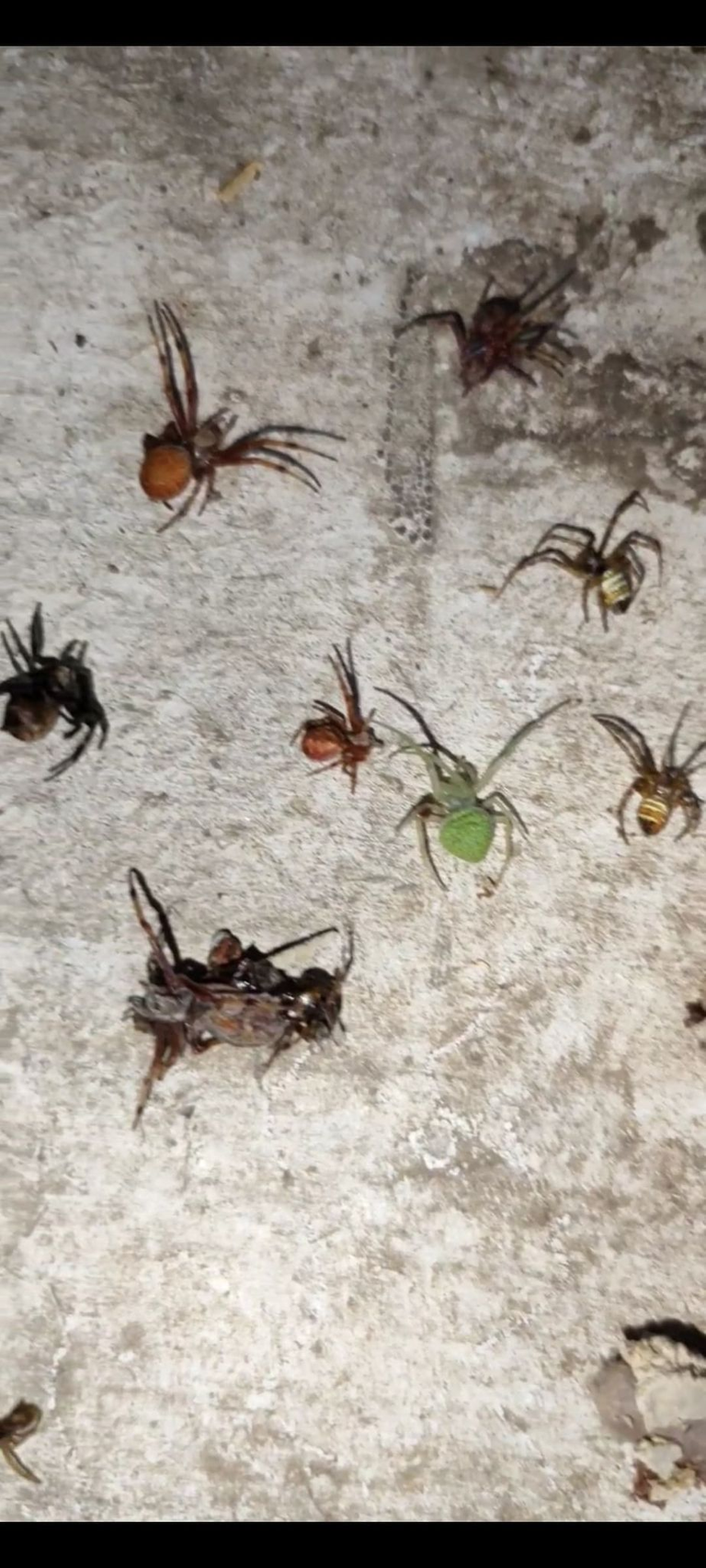
Various paralysed spiders from inside the nest.
The Mud Dauber hunts down (generally small) spiders of all sorts and injects them with a powerful paralysing agent, not unlike the famous Tarantula Hawk who is known for paralysing tarantulas and then laying its eggs inside the tarantula until they hatch and feed on the hapless spider.
Similarly the larva of the Mud Dauber will hatch inside their nest when the time is right and then feed upon the various paralyzed spiders inside. Once strong enough it will chew it's way out of the mud cocoon and be on it's way.
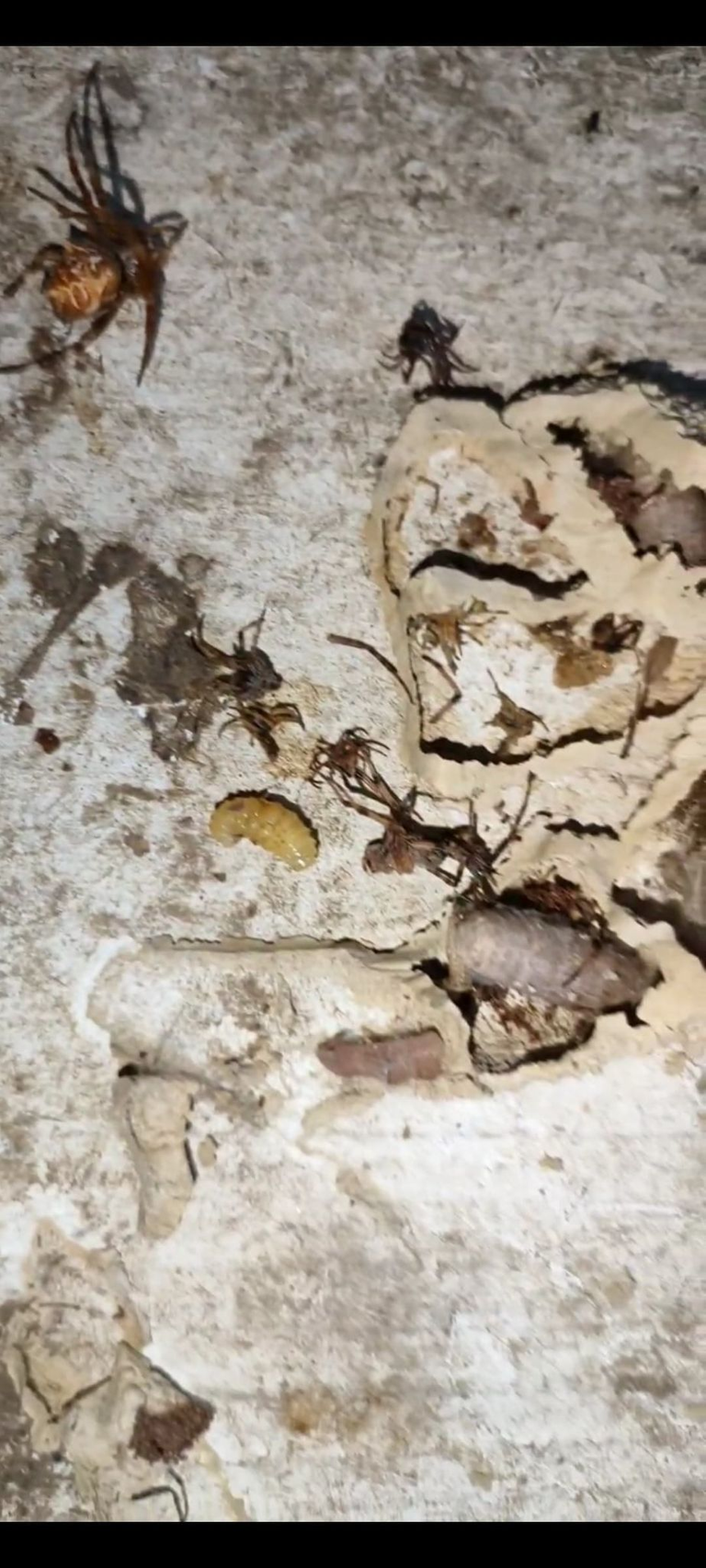
You can see the larva in the middle looking like a yellow bean
You can tell the spiders are still alive as some of them can wiggle their legs a tiny bit and because spiders legs run off of a system similiar to hydraulics. Pressurised fluid is what keeps their legs working and outstretched so when a spider dies its legs instantly curl into itself as the pressure inside disappears.
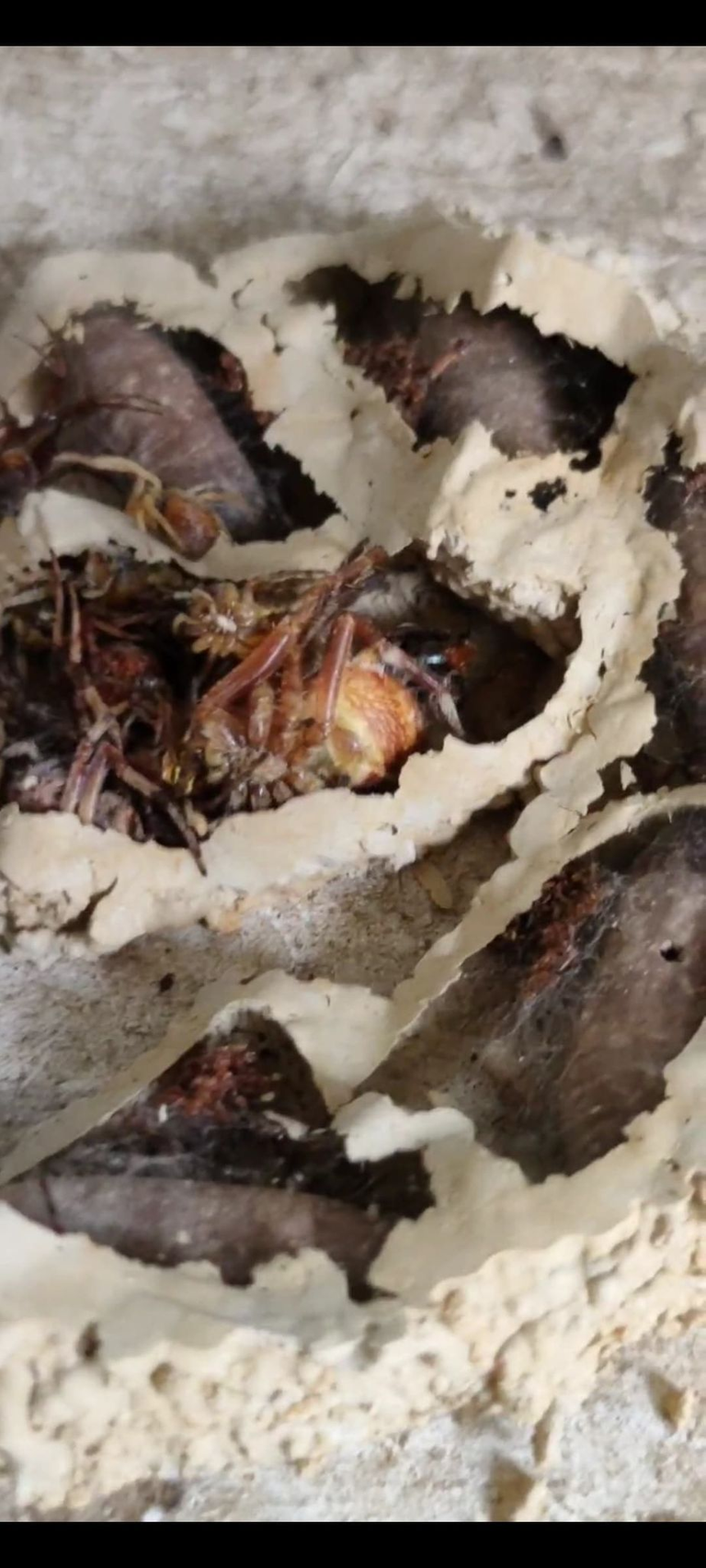
The spiders are stored in various little compartments inside the cocoon
Around my house I have found mostly single cocoons with up to 5 larva in each. The most paralysed spiders I have found inside one nest so far is 12. They were of all different varieties and even different colours but all were distinctly small. This isn't to say all of them will be small as I found some info online about some trying to drag rather large spiders into their nest unsuccessfully.
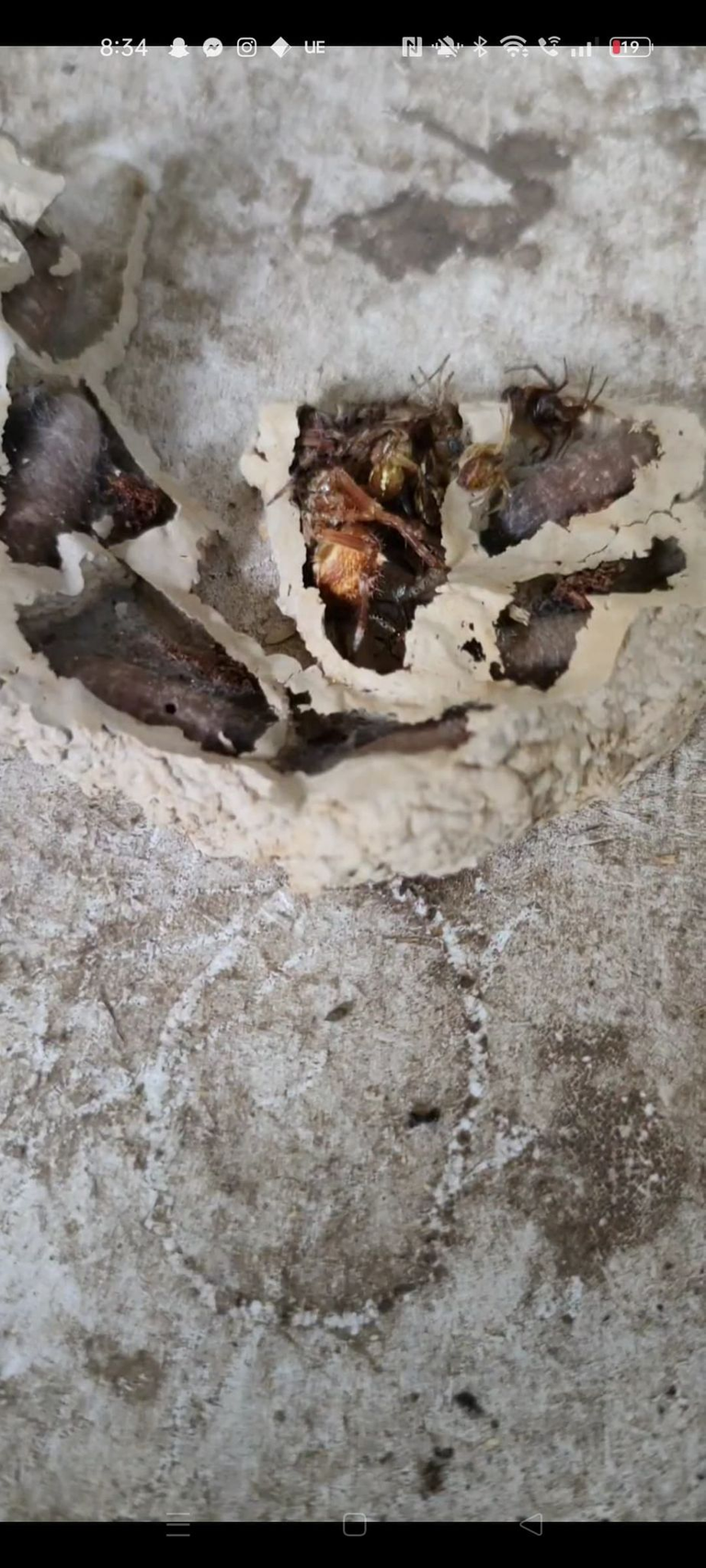
I went around the house and cut most of them open to see inside, the wasps are not in short supply around here so I didn't feel too bad ruining them. I actually squished everything after I opened them up and took pictures. Since I had ruined the cocoons the larva would die and the spiders would die as well neither serving any purpose. I do feel bad but I can only have so much sympathy for a parasitic wasp.
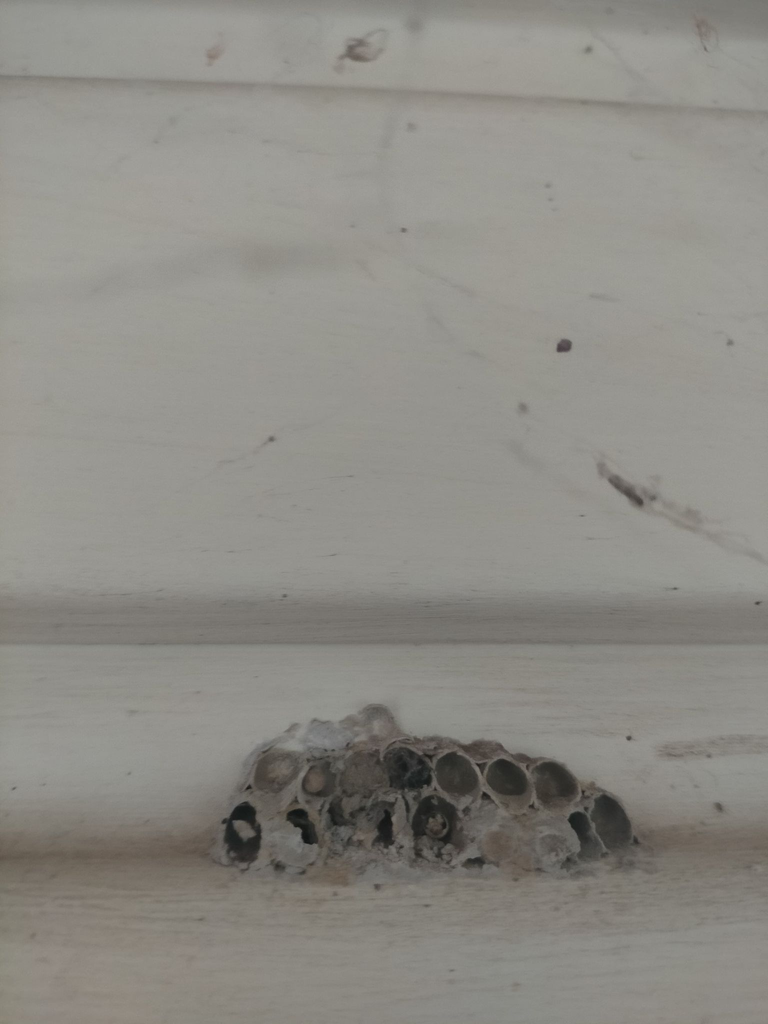
This is what the nest looks like from the outside, this is an older nest I believe but has been built on again and again
Funnily enough the Mud Dauber nests are often raided by other parasitic wasps and have their larva or spiders stolen. the adults feed almost exclusively on plant nectar and only hunt and catch the spiders to put into the nest and feed their young. The males have occasionally been seen guarding the nests but generally you find them sitting unguarded and alone.
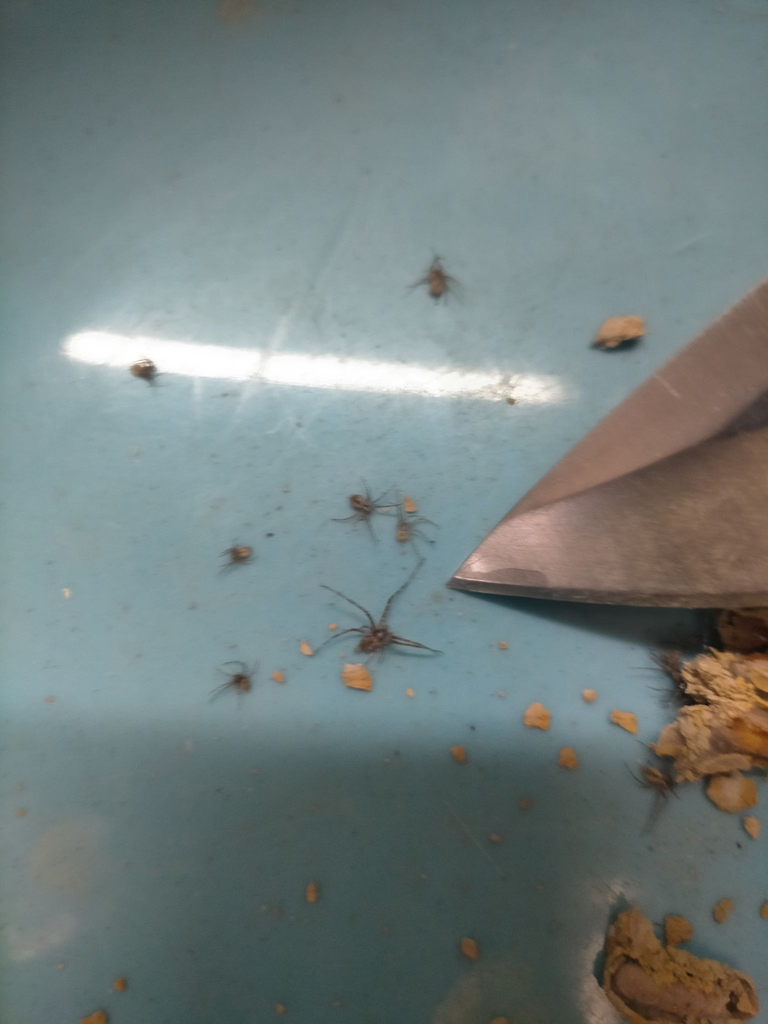
A second nest I cut open, a majority of the spiders are no bigger than the tip of the knife
I don't plan on breaking anymore open now I have seen what's inside but I thought it was pretty interesting and warranted taking a few pictures.



